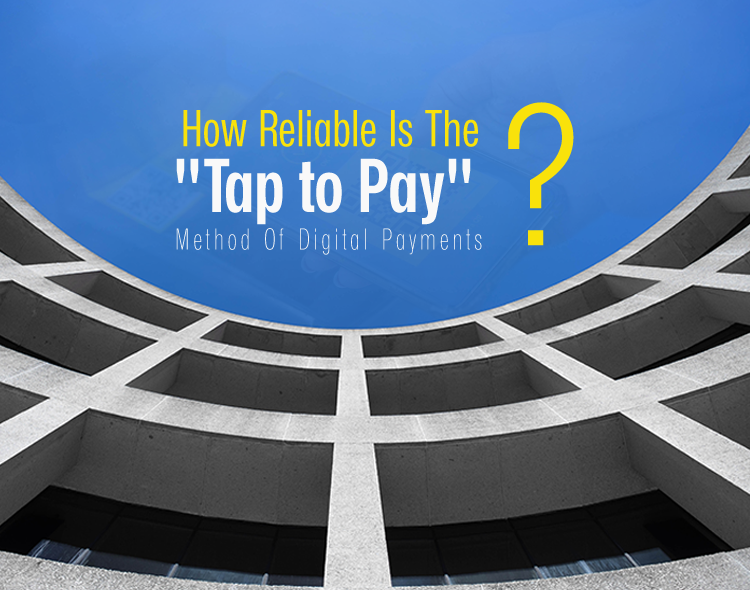“People are tired of having so many passwords.” – Greg Wolfond, SecureKey
Let’s take a look at what “tap to pay” is, how it works, the various options available, the advantages, and the disadvantages. Whether it’s worth the implementation for the long term or it’s just a phase of technology that people will gradually forget and bid goodbye.
Worldwide, “tap to pay” is a common phrase used in retail settings, but if you took a trip back in time, you might think the phrase was a riddle. The ways we make purchases are always developing. Direct commerce existed in the past. Later, the use of debit and credit cards was a major front. Now, tap-to-pay is revolutionizing economies all over the world.
How does Tap-To-Pay work?
Customers can make safe purchases using contactless EMV chip cards or NFC-enabled devices like smartphones and wearables using tap to pay. Near-field communication (NFC) is a contactless method of exchanging data between electronic devices. The three countries most prepared to abolish paper currency are Norway, Finland, and New Zealand.
To complete a purchase using a contactless credit card, simply hover or tap the card over the terminal. This technology relies on radio frequency identification chips. The card sends out short-range electromagnetic waves that are picked up by the POS system and processed to complete the transaction and charge your card.
Read More links for Fintech – FinTech RADAR: 105 U.S. Fintech Unicorns And Their Core Offerings
Companies dominating international contactless payment
- Visa Inc.
- MasterCard
- Apple Inc.
- PayPal Group, Inc.
- Amazon.com, Inc.
- Alibaba.com.
- PayU
Is the “Tap to Pay” Digital Payments Technology Efficient?
Merits:
- Efficiency and comfort as they can be processed up to ten times faster.
- Handling cash is not a concern at the checkout.
- Contactless tap-to-pay cards and digital wallets are more trustworthy than traditional payment options.
- Time and convenience benefits.
- Tap-to-pay cards, smartphones, and wearable gadgets with digital wallets are not indestructible, although they do wear out far more slowly than plastic credit or debit cards.
- Intense public interest.
- In order to stay competitive, over 65% of SMBs have made strategic shifts and attempted new things; 20% of these have adopted contactless payment methods.
- Employee and consumer hygiene have been greatly enhanced.
- Eighty percent of businesses agree that contactless payments help them keep the checkout area neat and safe for customers and employees.
- Almost no additional expense.
- Increasing Happiness and Loyalty among Customers.
- Customers benefit from many of the same enhancements in speed, security, and convenience.
- Safer financial transactions.
Read: Let’s Dive Deep Into Fintech Vs The Conventional Banking
De-merits
- This innovation is yet to be implemented in many commercial places, therefore transactions are limited.
- Since this doesn’t require a PIN, it’s less secure than chip and pin cards.
- Unwanted triggering might happen by bees flying or raindrops in front of the machine.
- Lost or stolen contactless cards can be used to make fraudulent transactions.
- They are more expensive compared to network bridges.
- Broadcast traffic may be troublesome.
- Limited international availability: Despite similar technology, some mobile wallets used for contactless payments do not get accepted abroad.
- Low transaction limit as some consumers may find this rule to hinder their overall shopping experience.
- Lack of familiarity leads to hesitation in adopting this payment method.
- Battery and device dependency.
Conclusion
Despite being backed by a robust fraud detection system and multi-layered security, customers are still wary of using a contactless payment facility. This cautious mindset can be a deterrent to businesses adopting and facilitating tap-to-pay payments. However, ongoing advancements in technology and increased security measures are continuously addressing these concerns and working towards enhancing the overall user experience.
As we discussed both the merits and demerits of the technology in the discussion, I can surely conclude that the merits outweigh the demerits and it’s indeed a milestone achieved in the digital payment domain which has a long way ahead.
Contactless payment techniques have become increasingly common as global awareness has increased. After the epidemic, there has been a shift toward using contactless payment methods, which has created new options. Several retailers are also incorporating contactless payments into their routines to provide their customers with a more secure payment option. The development of more secure payment systems and the introduction of novel products are driving forces in the market. The development of contactless payment mechanisms including contactless cards, digital wallets, QR codes, and Tap to Pay has increased the safety of transactions while also simplifying and expediting the payment process.
Read Latest: Generate AI Images From Text Using DALL-E : A Revolutionary Tool By OpenAI
[To share your insights with us, please write to sghosh@martechseries.com]
